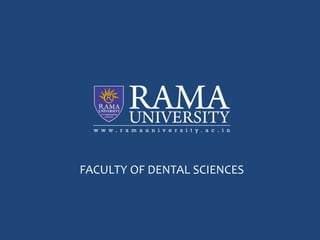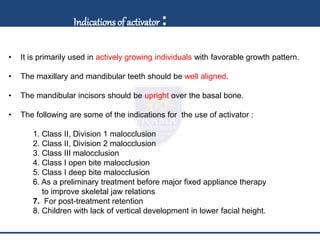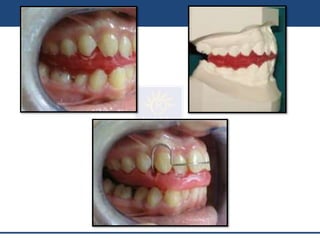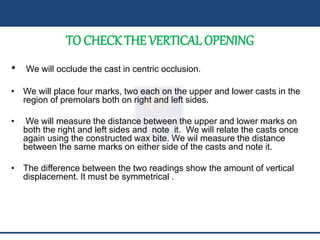The document discusses the history and development of the activator appliance. Some key points:
- The activator was developed in the late 1800s as a modification of earlier appliances to guide mandibular positioning.
- It uses light forces and proprioceptive stimulation to encourage favorable jaw growth.
- Taking an accurate construction bite to determine vertical and horizontal displacement is important for fabrication.
- The activator is trimmed over time to guide tooth eruption into the desired occlusion.
- It is indicated for Class II and III malocclusions in growing individuals, and various modifications have been developed.





































